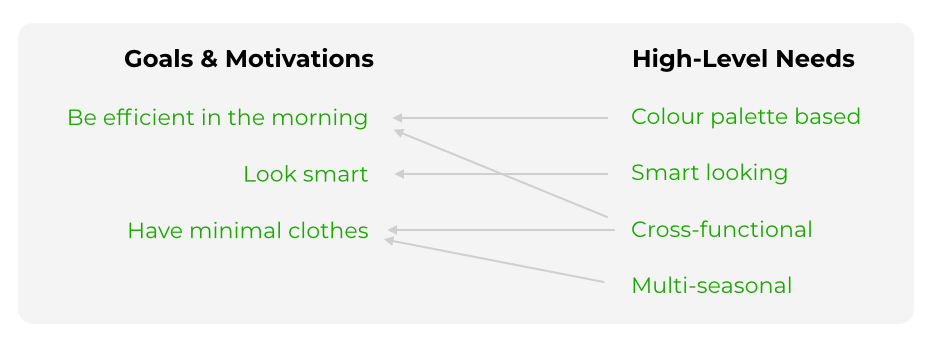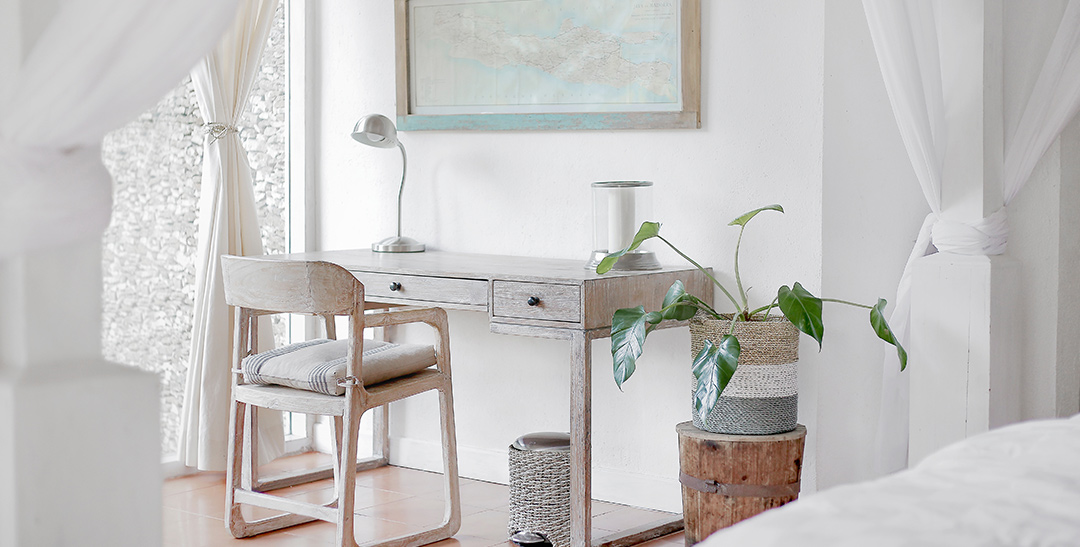You are reading Part 3 of the 7-part series on How to Skilfully Declutter Your Home Once and for All. If you are new to this series, then you may find it helpful to start from Part 1.
A few years ago, I lived in a beautiful Victorian house in London.
It had high ceilings, a lovely pond in the garden, and several rooms. One of these rooms was occupied by my housemate Billy. Both he and I shared an interest in philosophy.
One day, he recommended that I read one of his books which was by my favourite author. Later that day, I went up to his room and knocked on the door.
“Come on in!” Billy yelled.
When I entered, it took me half a century to find him! Not because he had a massive room, and not because he was playing hide and seek with me. I even poked a toy to ensure he hadn’t Abracadabra-d himself into a baby unicorn!
The reason it took me so long to find him was that his room was absolutely overflowing with junk!
Speakers, plates, dumbbells, files, clothes, books, papers, food—literally, the whole supermarket was crammed into that room.
And among this mess, sitting in a corner, was Billy. Pfff.
Now most of us don’t possess Billy’s particular brand of ‘ingenuity’. But if you want a bit of a tidier home, then this article is for you.
In the previous part we unveiled the importance of Need-Centric Organisation. We also established why it’s one of the best ways to keep clutter at arm’s length.
But how do we apply Need-Centric Organisation practically?
The Strategy
Based on my two decades of experience of designing enjoyable digital products, I have crafted a strategy. And that’s what we’ll consider in this article.
This strategy should help you create clean, low-maintenance, and delightful spaces. If executed correctly, it holds the power to change the way you’ll acquire any new objects.
Given that this is a blog and not a book, we’ll to have to limit the scope of varying scenarios. We’ll assume the most likely scenario of decluttering either part or the whole of your home. Additionally, we’ll pretend that you’re the only one living in that home, though where necessary I’ll cater to a family setup.
Three Stages
This strategy is divided into three stages.
- Elicit: Shows you how to draw out your needs.
- Eliminate: Explains a robust way to remove clutter. (Sorry Billy.)
- Establish: Describes how to create a new space.
You’ll see three separate articles for each of these stages. The focus of this article, however, is the first stage.

Stage 1: Elicit
Understanding your needs is the most crucial step in this whole strategy.
As you’ll see, everything you execute throughout the remainder of this strategy depends on this step. Therefore I invite you to carry out this step sincerely. No shortcuts please!
Another important note: if you live with others and you’re looking to reorganise a shared space, consider doing the exercises shown below with each of your family members or housemates.
Two Approaches
They say that there’s more than one way to skin a cat. For us, there’s two.
Depending upon the type of stuff you’re dealing with, you can select the more appropriate of the two approaches shown below:
- Thorough Approach: Use this for areas that tend to attract more clutter e.g. a wardrobe.
This approach requires you to assess your needs thoroughly. The more you employ this approach in various areas of your home, the better the chances of you keeping those areas clutter free for a long time.
Given such benefits, the Thorough Approach can’t simply be substituted with its counterpart; sometimes Lite won’t quite cut it! - Lite Approach: Your kitchen can be a good candidate for this approach.
Based on your regular usage, it’s much easier for you to know what you frequently use. And, more importantly, what you don’t. For instance, you can intuitively recognise a specific pan that you use daily. Similarly, you can quickly identify that giant spoon you thought you needed but actually didn’t.
Basically, in such cases your needs don’t require a comprehensive assessment. Therefore, you can skip this first stage in its entirety and proceed to the next stage.
So while the Lite Approach is easy-peasy, the benefits of the Through Approach are greater by far. Let’s look at that in a bit more detail.
Thorough Approach
The Thorough Approach requires you to first understand your goals. You then extrapolate needs from those goals. And lastly you refine those needs.
 Note:
Note:
- Use paper, software, or an app to document these themes. Don’t rely on your memory. The mind is like Michelangelo. It needs to see things to paint a good picture.
- Resist the urge to think about the actual, individual items such as trousers or tops. We’ll consider those later.
That said, let’s discover how to understand your goals.
1. Understand Goals
“If the ladder is not leaning against the right wall, every step we take just gets us to the wrong place faster.” —Stephen Covey
This step is all about building a big picture.
Zoom out fully and orient your focus towards your goals and motivations. For example, when I’d wanted to organise my wardrobe I established my goals and motivations like so:
- Be efficient in the morning,
- Look smart,
- Have minimal clothes
The last article in this series will show you all the steps I’d taken to organise my wardrobe.
Derive goals by asking these questions respectively:
- In the context of the space I’m trying to organise, and considering my daily routine, what am I trying to accomplish?
- What brings me dissatisfaction with the current setup?
- How would the space look if I had a magic wand?
See if you can write down answers to these questions, each on a separate A4 sheet. Use the clues to construct your goals.
2. Define Needs
Now it’s time to extrapolate your needs from the goals. We break this task into two steps.
High-Level Needs
We zoom in a bit but still remain at a high level.
Explore various ways to meet your goals. Let me illustrate this for you. Based on my above goals, I came up with the following high-level needs:
- Colour palette based,
- Smart looking,
- Cross-functional (wearable in and outside work),
- Multi-seasonal.
The illustration below shows you how each need maps to one or more goals.

Low-Level needs
Finally, it’s time to identify specific items from the high-level needs.
Here’re the items I jotted down for my wardrobe:
- Trousers – 2 pieces,
- Shirts – 4,
- T-shirts – 2
See if you can carry out this exercise objectively. Remember, needs and wants are two different things. Remain focused on the needs. Ignore any inner voice that sounds like a want.
3. Refine Needs
Once you have your needs established, the next step is to fine-tune that list by removing all extra items.
I don’t need four pairs of trousers. Two will do.
The idea is to keep only the essentials. Retain stuff that meets your psychological and physical needs.
Have just the things you love.
It’s probably in your best interest to befriend the Minimalist Mindset. Reconnect with your needs using the mantra: Everything is unnecessary.
Remember, if this list of needs is long, then be sure the clutter isn’t going anywhere.
Let’s Go Test-Drive
In this article, we looked at the first stage of the strategy that will help you organise your home in probably the most effective way.
By assessing your goals and needs upfront, you create a blueprint for desired areas. The efforts you put in to creating this blueprint will help you design delightful spaces. It will enable you to build areas where all objects serve you fully. No more space-stealing junk.
In the next article, you will discover how you can take this blueprint and start removing the clutter in an entirely new way.
You’ll also receive valuable tools for mind-management. You’ll learn how to calm down that unhelpful mental call that says, “Oh I can’t give this away because Uncle Bob gave it to me.”
Lastly, consider doing this thought experiment: Open up your wardrobe. Identify a well-used shirt or top. Then figure out why you’ve used it so much. If you get the answer “Because I like it” then dig deeper. See if you can identify your needs and the goals that were served by that item.
I wish you good luck.


